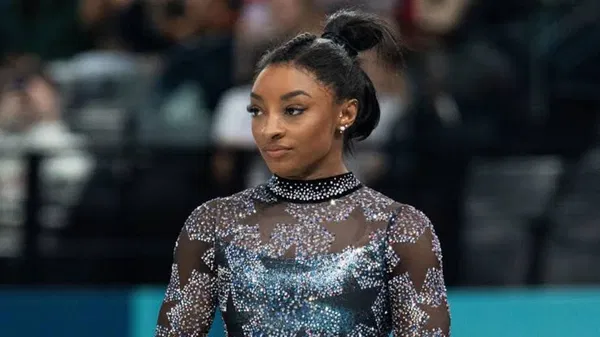Throughout gymnastics history, athletes like Laurie Hernandez have faced early departures from their careers, often due to injuries, mental challenges, or the pressures of navigating diverse coaching methods. In contrast, Simone Biles has emerged as a symbol of resilience and longevity. Returning to the Olympic stage in Paris at 27, she defied expectations, adding four more medals to her record-breaking career—three gold and one silver. With a total of 11 Olympic medals, she stands as the most decorated gymnast in U.S. history, reinforcing her status as the Greatest of All Time (GOAT) in gymnastics.
Simone’s return to Olympic competition after prioritizing her mental health in Tokyo surprised and inspired many. In the third episode of Simone Biles Rising, she speaks candidly about the realities of aging in gymnastics. She describes how, over time, it felt like her body was “rusting,” a relatable struggle for many athletes in sports that often see young prodigies. Simone’s experience challenges the stereotype that athletes can only peak as teenagers, a perspective reinforced by an insider who explains how injuries are viewed differently across sports. Unlike some leagues, where injuries don’t end careers abruptly, gymnastics often sees early retirements due to the sport’s physical demands. However, Simone’s career, aided by careful coaching and training, has shown that with the right approach, athletes can have successful, sustained careers.
Simone also addresses misconceptions about aging and athletic performance, stating, “Everybody thought I was gonna go downhill or be washed up.” Instead, she emphasizes that the sport has evolved, allowing athletes to prioritize mental and physical breaks, which can lead to even stronger returns. Her success might change how gymnasts view their potential longevity in the sport.

Much of this success is attributed to the support from her coaches, Cecile and Laurent Landi, who joined her at the World Champions Centre in Houston—a gym run by her family—when Simone was just 20 and already an Olympic champion. The Landis, familiar faces from past competitions, focus on adapting their training to fit each athlete’s strengths, moving away from rigid coaching styles. This method was instrumental in helping Simone not only maintain but also elevate her performance.
Reflecting on the contrasting experiences of other gymnasts, Laurie Hernandez’s journey shows the toll that pressure and injury can take. Laurie, who began gymnastics at five and competed alongside Simone in Rio, faced injuries upon her return to competition and ultimately retired in 2021 after a torn meniscus ended her Olympic comeback. She has since focused on her mental health and begun therapy to address depression, bringing attention to the emotional abuse she faced from a former coach. Her story, like those of many gymnasts, highlights the struggles and pressures that often drive athletes to early retirements.
Dominique Moceanu’s career tells a similar tale of resilience and reinvention. Part of the first U.S. women’s team to win Olympic gold, she retired in 2000 after injuries and family issues derailed her Olympic dreams for Sydney. Dominique transitioned into coaching, where she shares her experiences with a new generation of gymnasts.
Simone’s continued success, with her coaches’ support, challenges the narrative that gymnasts peak as teens. Her legacy, built on a foundation of resilience and adaptability, reshapes how longevity in gymnastics is perceived and offers a hopeful perspective for future athletes.